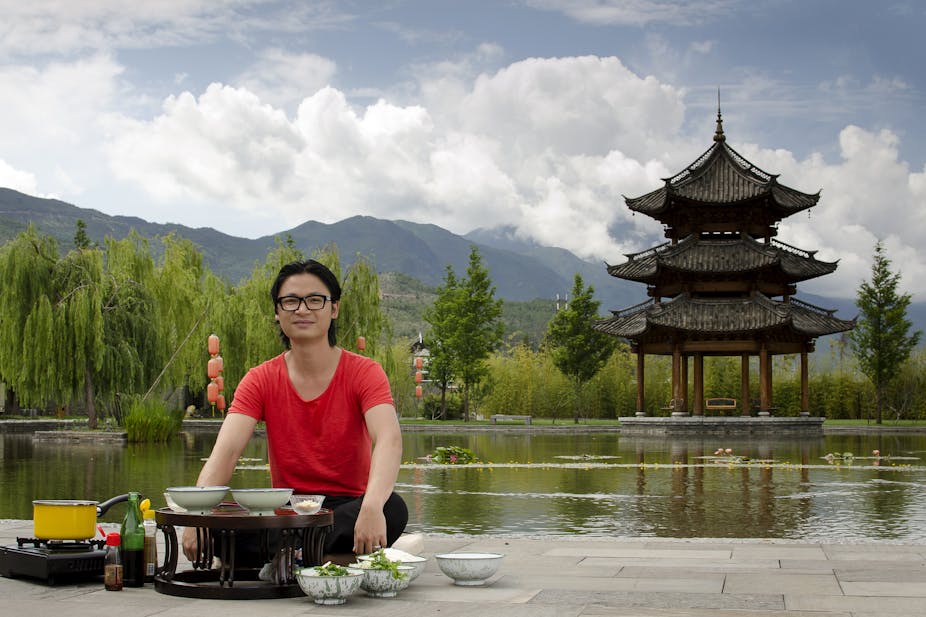Being an Asian in Australia today is very different from ten years ago, especially when it comes to Australian television.
Over the past 12-18 months advertising campaigns for a range of high profile brands have featured more Asian characters, tapping into this 8% of the population that reside in Australia.
An example of this is shown in Australian Mining’s depiction of Australia today in the “this is our story” campaign, showing a diverse rage of ethnicities in a series of documercials. The one featuring Len Thong stands as an example of an Asian Australian story on mainstream Australian television.
But are gestures such as this tokenistic or a real indicator of a re-balancing of our mainstream screen culture that for too long has been largely Anglo-Saxon in its flavour? Is it that we are changing, starting to awaken to the idea that their stories are our stories?
This idea of “changing” is key to the full emergence of Asian-Australian stories on the screen today. Especially in a country where cultural diversity is the norm, not the exception. Unfortunately the fact is that we are yet to see this diversity reflected thematically and by casting choices on the mainstream TV screen.
To see how this change might happen we need to look at the origins of the problem in the White Australia Policy which came to an end in the seventies.
While specifically unique to Australia, this type of policy was not unusual of such ethnically and racially driven governmental policies. Comparisons can be made to other former colonies such as the United States.
The end of White Australia came as a new era was dawning for Australian screen and radio, with the creation of the Australian Film, Television and Radio School (1973), Australian Film Commission (1975), and SBS (1978/79) with governmental mandate of giving voice to the growing multicultural society that was Australia.
These events were significant in creating a space for these voices. However they did not and have not in themselves changed how Asian-Australians are depicted to the broader general public.
What has come to pass is that these stories and faces stay on SBS. This is not to underplay the role the station has played – Australians have welcomed the diversity it has offered. But the true diversity of Australia is not shown on our screens to the larger population.
The issues around this deficiency are broader than just the inequity of representation but can be seen as having roots in it. These include a lack of roles for Asians and fewer Asian actors.
The creative arts are seen as an unreliable career path to many parents of immigrants who dissuade their offspring’s ambitions to be actors and filmmakers. This perception needs to be part of what is changed.
Research into the representation of Asian people on Australian screens has started at a grassroots level, with organisations such as the Australian Asian Studies Research Network and conference, the Asian Australian Film Forum and PERIL Magazine.
These events have started the dialogue, the next steps need to be carefully thought out. Just as in the US with NBC and CBS among others, the development of initiatives with the public sector to support and engage diversity are needed here.
It is obvious that the process of facing, negotiating and overcoming the lack of diversity has only just begun. It must be driven by both broadcaster and artist/producer so that we achieve an equality on the screen. It is the question of how and when this happens that requires more active participation and engagement by the parties. This can only be achieved through further research initiatives and focused talent development programs.
In May of 2011 the Immigration Museum held the exhibition Identity: yours, mine, ours. The stories and images were of the people who make Australia, its catch phrase was “I belong, do you?”.
The stories of Australia that are yet to be told encompass the full palette of the everyday and fantastic of our ethnic landscape. These stories have nothing to do with what we look like, just who we are and how we feel.
When this does happen it will most likely be for a mixture of altruistic and commercial reasons, given the nature of the business of media. But this should not overshadow the benefits of allowing to be seen, stories of, and for, all of us.

